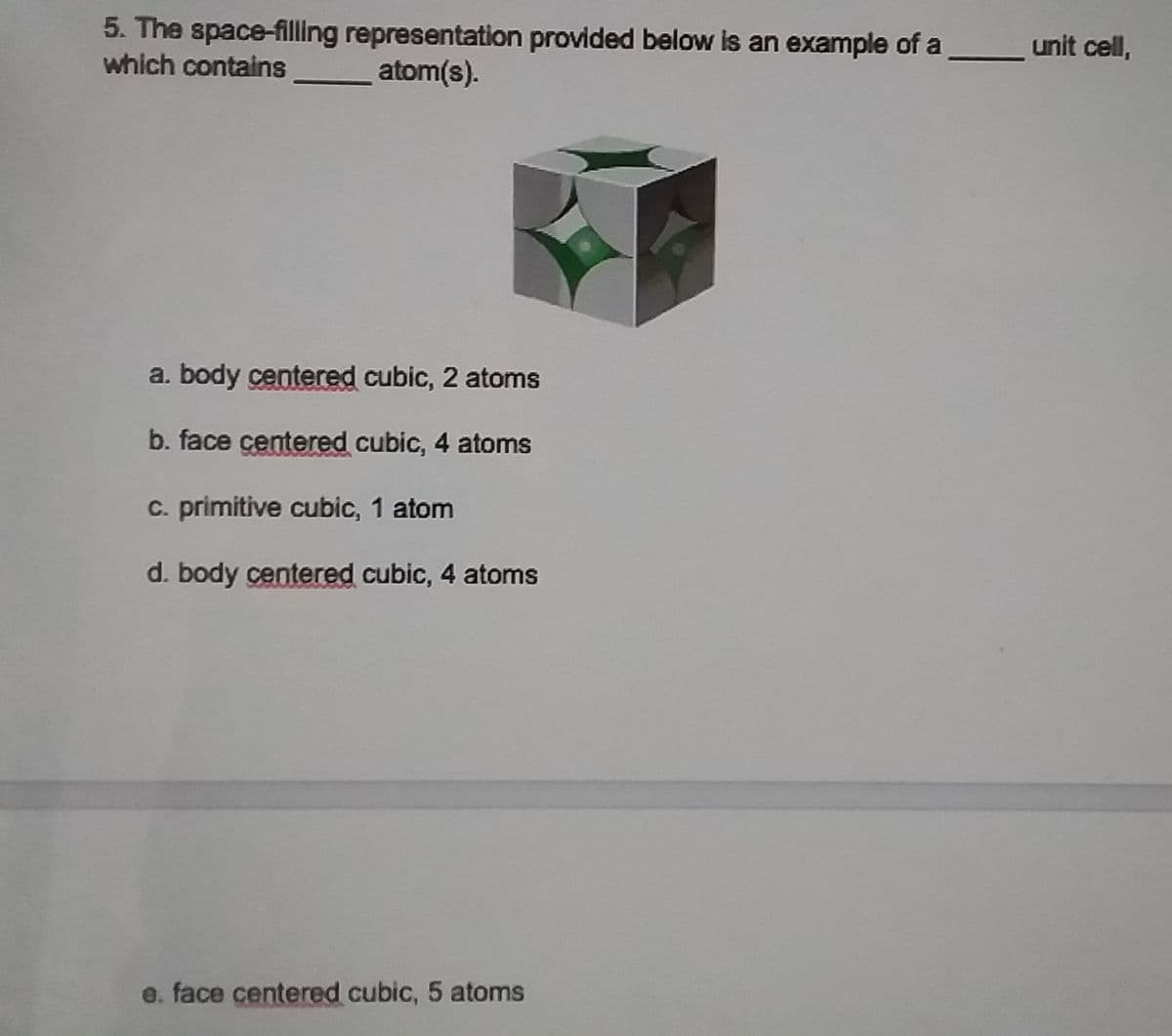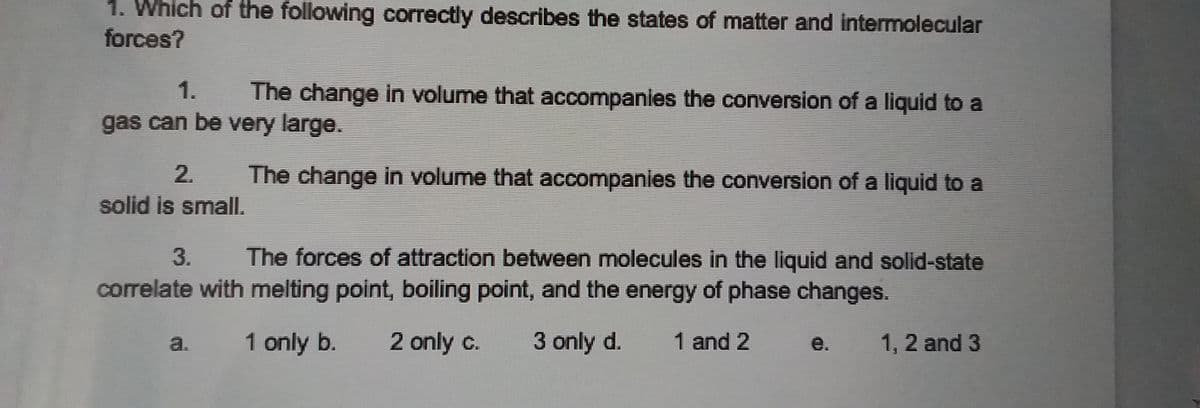5. The space-filling representation provided below is an example of a unit cell, which contains atom(s). a. body centered cubic, 2 atoms b. face centered cubic, 4 atoms c. primitive cubic, 1 atom d. body centered cubic, 4 atoms e. face centered cubic, 5 atoms
5. The space-filling representation provided below is an example of a unit cell, which contains atom(s). a. body centered cubic, 2 atoms b. face centered cubic, 4 atoms c. primitive cubic, 1 atom d. body centered cubic, 4 atoms e. face centered cubic, 5 atoms
Chemistry & Chemical Reactivity
10th Edition
ISBN:9781337399074
Author:John C. Kotz, Paul M. Treichel, John Townsend, David Treichel
Publisher:John C. Kotz, Paul M. Treichel, John Townsend, David Treichel
Chapter12: The Solid State
Section: Chapter Questions
Problem 46GQ: Vanadium metal has a density of 6.11 g/cm3. Assuming the vanadium atomic radius is 132 pm, is the...
Related questions
Question

Transcribed Image Text:5. The space-filling representation provided below is an example of a
which contains
unit cell,
atom(s).
a. body centered cubic, 2 atoms
b. face centered cubic, 4 atoms
C. primitive cubic, 1 atom
d. body centered cubic, 4 atoms
e. face centered cubic, 5 atoms

Transcribed Image Text:1. Which of the following correctly describes the states of matter and intermolecular
forces?
1.
The change in volume that accompanies the conversion of a liquid to a
gas can be very large.
2.
The change in volume that accompanies the conversion of a liquid to a
solid is small.
3.
The forces of attraction between molecules in the liquid and solid-state
correlate with melting point, boiling point, and the energy of phase changes.
a. 1 only b.
2 only c.
3 only d.
1 and 2 e.
1, 2 and 3
Expert Solution
This question has been solved!
Explore an expertly crafted, step-by-step solution for a thorough understanding of key concepts.
This is a popular solution!
Trending now
This is a popular solution!
Step by step
Solved in 2 steps

Recommended textbooks for you

Chemistry & Chemical Reactivity
Chemistry
ISBN:
9781337399074
Author:
John C. Kotz, Paul M. Treichel, John Townsend, David Treichel
Publisher:
Cengage Learning

Chemistry & Chemical Reactivity
Chemistry
ISBN:
9781133949640
Author:
John C. Kotz, Paul M. Treichel, John Townsend, David Treichel
Publisher:
Cengage Learning

Chemistry: Principles and Reactions
Chemistry
ISBN:
9781305079373
Author:
William L. Masterton, Cecile N. Hurley
Publisher:
Cengage Learning

Chemistry & Chemical Reactivity
Chemistry
ISBN:
9781337399074
Author:
John C. Kotz, Paul M. Treichel, John Townsend, David Treichel
Publisher:
Cengage Learning

Chemistry & Chemical Reactivity
Chemistry
ISBN:
9781133949640
Author:
John C. Kotz, Paul M. Treichel, John Townsend, David Treichel
Publisher:
Cengage Learning

Chemistry: Principles and Reactions
Chemistry
ISBN:
9781305079373
Author:
William L. Masterton, Cecile N. Hurley
Publisher:
Cengage Learning

Chemistry by OpenStax (2015-05-04)
Chemistry
ISBN:
9781938168390
Author:
Klaus Theopold, Richard H Langley, Paul Flowers, William R. Robinson, Mark Blaser
Publisher:
OpenStax

Chemistry for Engineering Students
Chemistry
ISBN:
9781337398909
Author:
Lawrence S. Brown, Tom Holme
Publisher:
Cengage Learning

General Chemistry - Standalone book (MindTap Cour…
Chemistry
ISBN:
9781305580343
Author:
Steven D. Gammon, Ebbing, Darrell Ebbing, Steven D., Darrell; Gammon, Darrell Ebbing; Steven D. Gammon, Darrell D.; Gammon, Ebbing; Steven D. Gammon; Darrell
Publisher:
Cengage Learning